Share this
Understanding USDT: The Stablecoin Every Investor Should Know
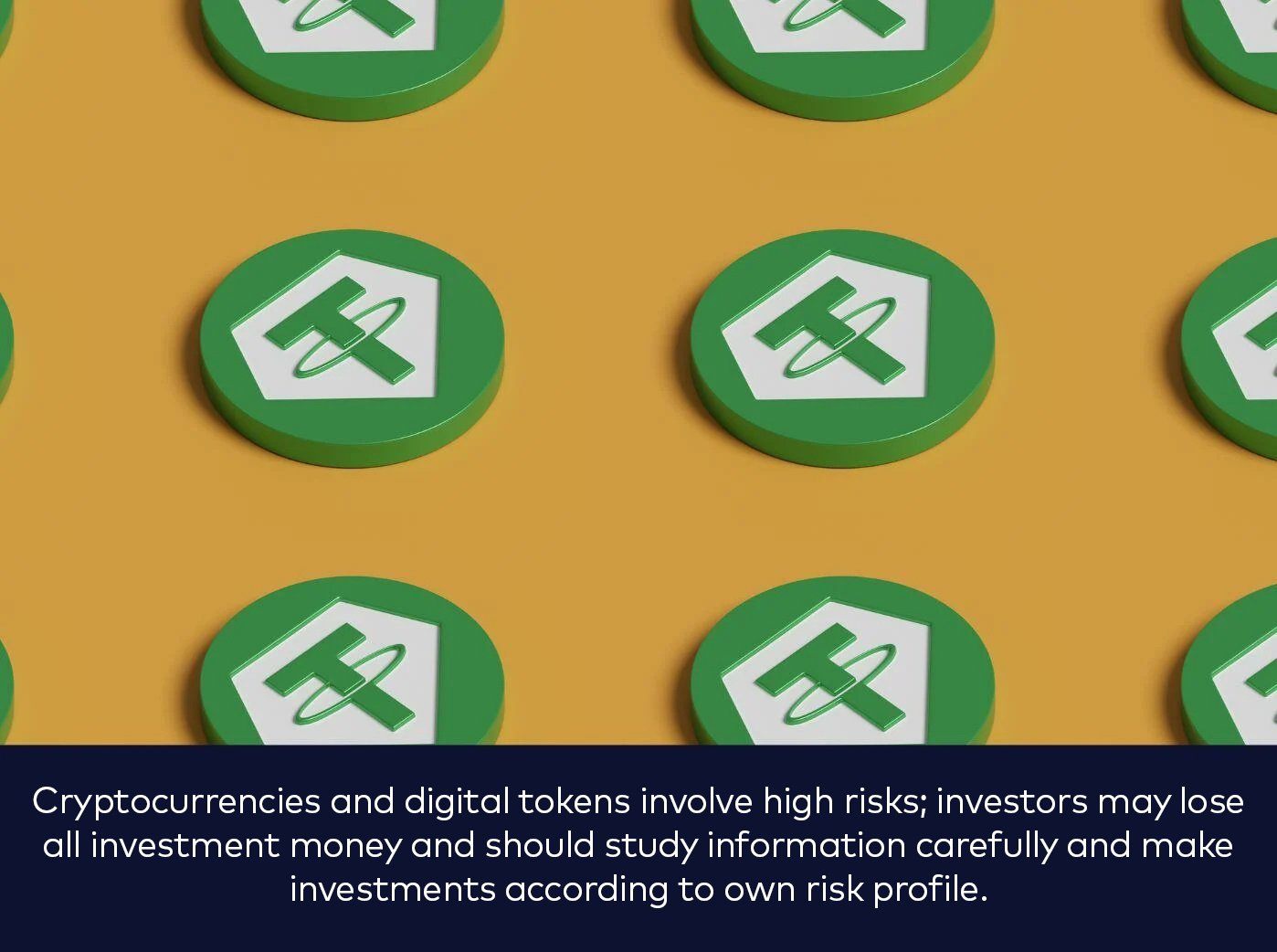
Before making any investment, whether domestic or international, money is essential for exchange. The same principle applies to cryptocurrency trading, where digital coins are the primary medium for transactions. Finding a widely accepted cryptocurrency is the first step to seamless trading.
Today, we’re introducing you to USDT, a popular stablecoin that plays a key role in crypto trading platforms worldwide. But what exactly is USDT? What does it stand for? How valuable is it? And is it safe? Let’s break it down.
What is USDT?
USDT (Tether) is a cryptocurrency created in 2014 by Brock Pierce, Reeve Collins, and Craig Sellars. Initially known as ‘Realcoin,’ it was later rebranded to ‘Tether’ under CEO Paolo Ardoino — the name we recognize today.
USDT is classified as a Stablecoin — a type of cryptocurrency designed to maintain a stable value. Unlike other cryptocurrencies known for price volatility, stablecoins are meant to mirror the value of traditional fiat currencies.
How is USDT’s Value Maintained?
Stablecoins can maintain their value through different mechanisms:
- Fiat-Collateralized: Backed by real-world currencies like USD, EUR, etc.
- Crypto-Collateralized: Backed by other cryptocurrencies.
- Commodities-Collateralized: Backed by tangible assets such as gold or oil.
- Algorithmic Stablecoin: Value controlled by algorithms that regulate supply.
USDT falls under the Fiat-Collateralized category, meaning its value is backed by reserves held by Tether — primarily U.S. dollars. For example, if there are 1 million USDT in circulation, Tether must hold $1 million in reserves, ensuring a 1:1 value ratio where 1 USDT = $1.
What is USDT Used For?
Using USDT is similar to using traditional currencies for investments across various markets. Here’s how traders typically get started:
- Open an Account on an Exchange: Create an account with your preferred cryptocurrency exchange platform.
- Deposit Funds and Convert to USDT: Exchange your fiat currency (USD, EUR, THB, etc.) for USDT through methods like credit cards, P2P trading, or bank transfers.
- Complete Your Purchase: Once the transaction is complete, your USDT will be stored in your digital wallet.
Thanks to its stability and widespread acceptance, USDT has become a trusted choice for traders seeking flexibility and convenience.
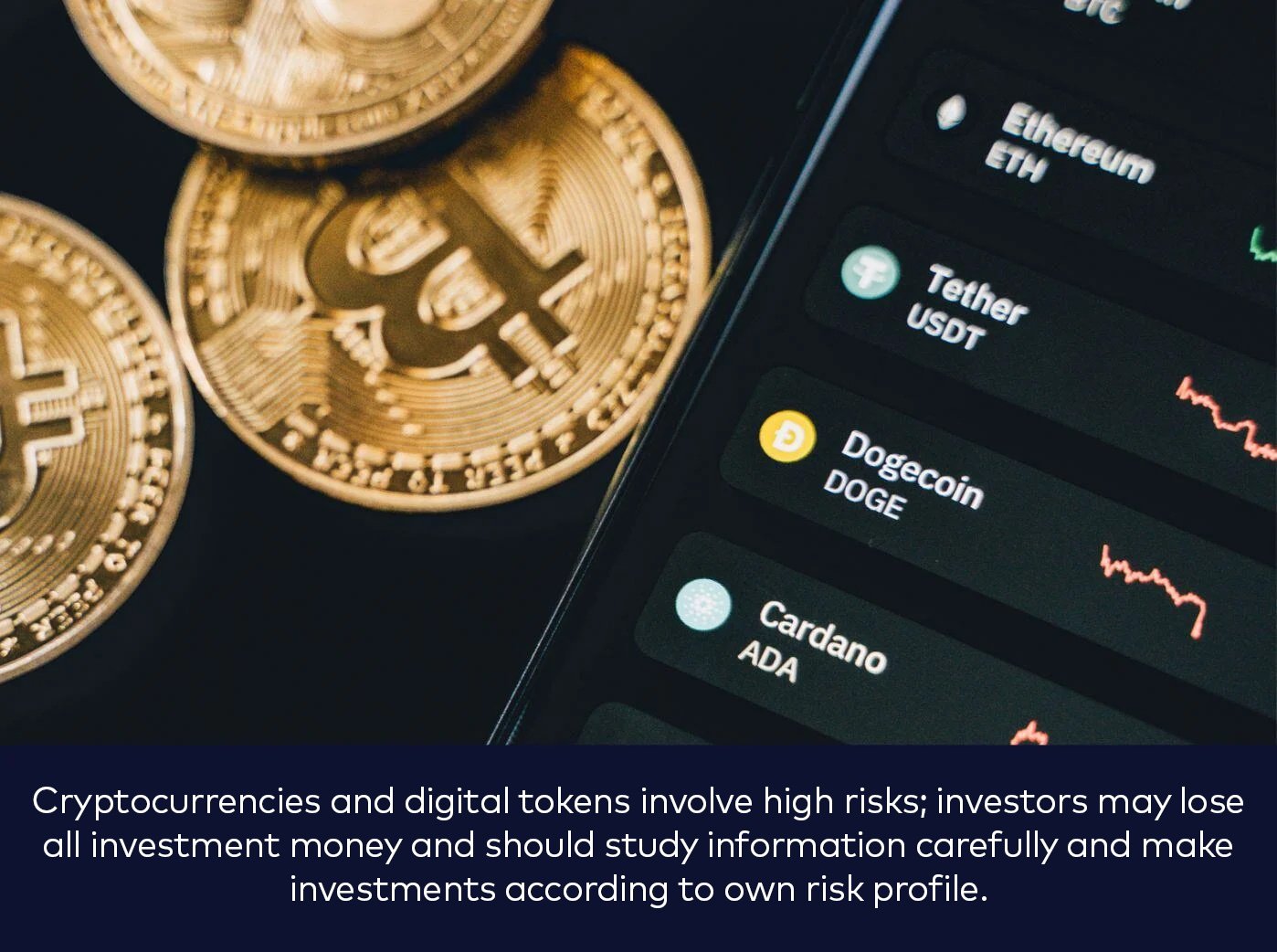
Where Can You Use USDT?
USDT is widely used not only for cryptocurrency investments but also for:
- Trading on leading blockchain networks such as Ethereum, Tron, Algorand, Avalanche, EOS, Liquid Network, and more.
- DeFi (Decentralized Finance) transactions where stability is crucial.
- Secure value storage with the flexibility to transfer, deposit, or withdraw funds without banking restrictions.
USDT gives users full control over their funds, reducing the risk of bank account freezes.
Risks of USDT
The primary concern surrounding USDT revolves around Tether’s reserves. Investors often question whether Tether holds sufficient reserves to match the amount of USDT in circulation. While Tether claims to back its tokens 1:1 with U.S. dollars, the company has faced scrutiny over the exact composition of its reserves, which may include other assets like bonds, stocks, or cryptocurrencies.
This uncertainty has led some investors to prefer other stablecoins like USDC, which undergoes regular third-party audits for added transparency.
The Future of USDT
USDT remains a go-to stablecoin for new investors looking to convert their fiat currency into digital assets. Its widespread availability, ease of use, and stable value make it a trusted option in the crypto community.
Another advantage is that USDT transactions can be completed directly on blockchain networks without intermediaries, resulting in faster transactions and lower fees. This efficiency contributes to its enduring popularity.
Can You Mine USDT?
Unlike traditional cryptocurrencies that require powerful computers for mining, USDT can now be ‘mined’ via smartphone apps. By downloading a mining app and tapping a button, users can start accumulating USDT.
However, mobile mining often comes with trade-offs:
- Mining apps are generally slower, requiring significant time to earn a meaningful amount.
- Some apps may require paid upgrades to withdraw coins or speed up the process.
Before committing to mobile mining, carefully review the app’s terms and weigh the time investment against potential returns.
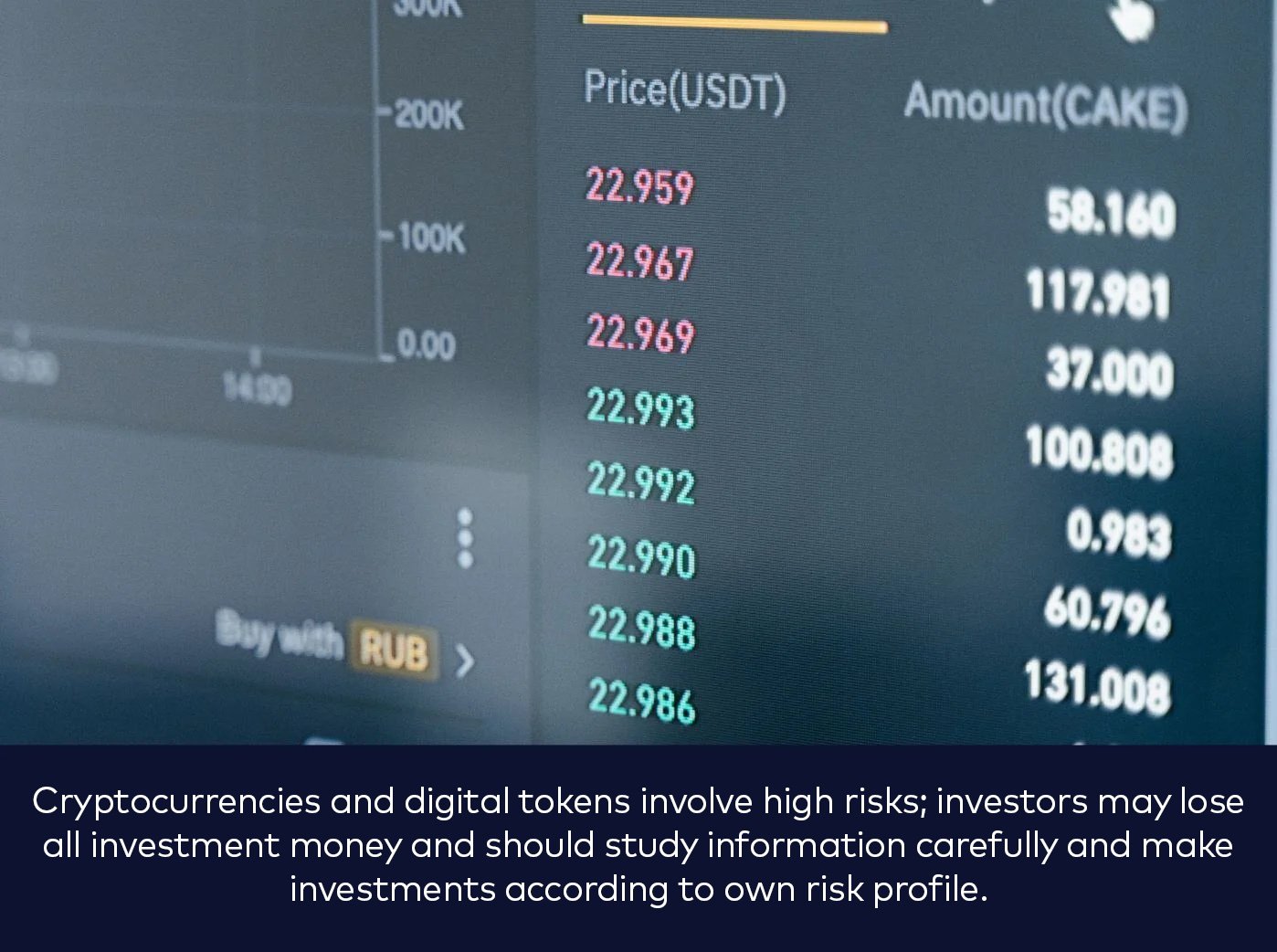
Frequently Asked Questions About USDT
- Is USDT Safe?
USDT is considered relatively safe as a stablecoin due to its claimed 1:1 USD reserve backing. Its stability, ease of exchange, and low volatility make it popular among investors. However, USDC may be seen as safer by some due to its third-party audits and stricter transparency practices. Regulatory developments could also impact USDT’s future stability, so staying informed is key.
- How is USDT Different from Other Stablecoins?
The key difference lies in the underlying mechanism. USDT is a Fiat-Collateralized Stablecoin, meaning its value is directly tied to USD at a 1:1 ratio. This stability, combined with low transaction fees and compatibility with various tokens, sets USDT apart as a trusted digital asset.
Key Takeaways
For those entering the world of cryptocurrency, exchanging fiat currency for USDT is often the first step. While USDT offers stability, convenience, and ease of use, it’s important to consider factors like the credibility of its reserves and potential regulatory changes.
A smart approach for new investors is to start small, learn the ropes, and gradually increase investments as you gain confidence. As with any investment, staying informed and managing risk is crucial.
USDT continues to be a strong player in the crypto market — but remember, every investment carries risks, so proceed thoughtfully.
Disclaimers
- Cryptocurrencies and digital tokens are highly risky; investors may lose all investment money. It is important to study information carefully and invest based on your own risk profile.
- Past returns or performance of digital assets do not guarantee future returns or performance.
Remark: The views, information, knowledge, and opinions expressed herein are those of the individuals involved and do not represent the views of Bitazza or its employees. Neither this email nor the content presented constitutes investment advice.
References
Share this
- November 2025 (1)
- October 2025 (13)
- September 2025 (9)
- August 2025 (12)
- July 2025 (19)
- June 2025 (11)
- May 2025 (11)
- April 2025 (15)
- March 2025 (11)
- February 2025 (15)
- January 2025 (9)
- December 2024 (10)
- November 2024 (8)
- October 2024 (9)
- September 2024 (7)
- August 2024 (16)
- July 2024 (3)
- June 2024 (46)
Subscribe by email
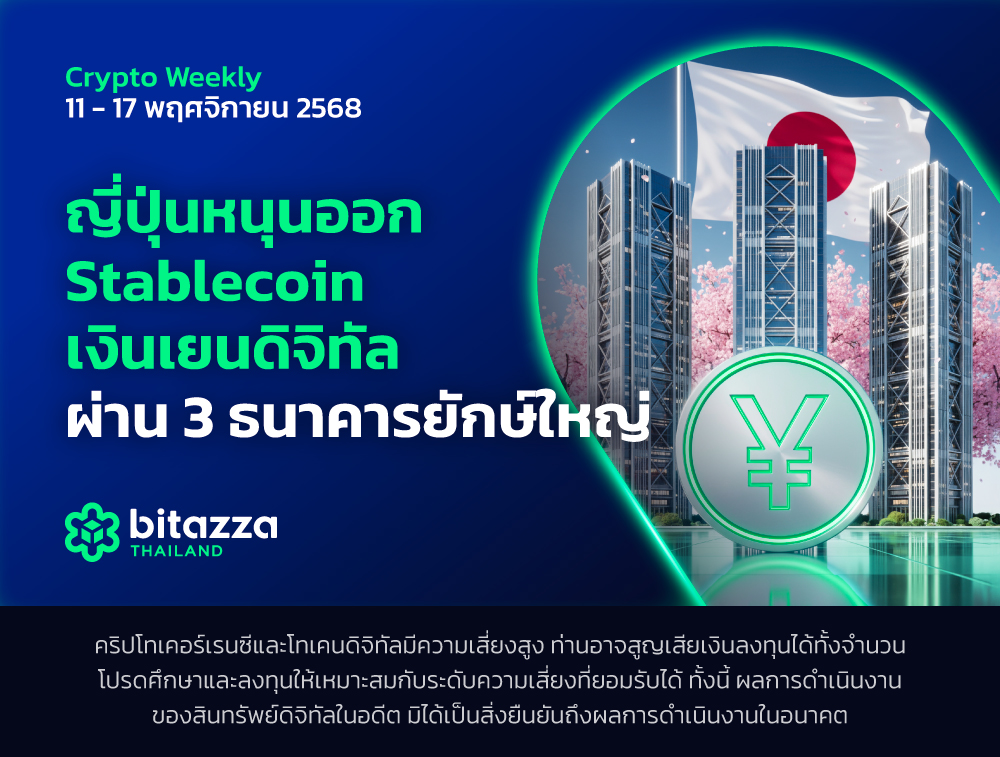
ญี่ปุ่นหนุนออก Stablecoin เงินเยนดิจิทัลผ่าน 3 ธนาคารยักษ์ใหญ่

ภารกิจคู่สุดปัง! เช็คอินรายวัน & เทรดเหรียญรายเดือน รับสูงสุด 72 Freedom Shards (FDS)*
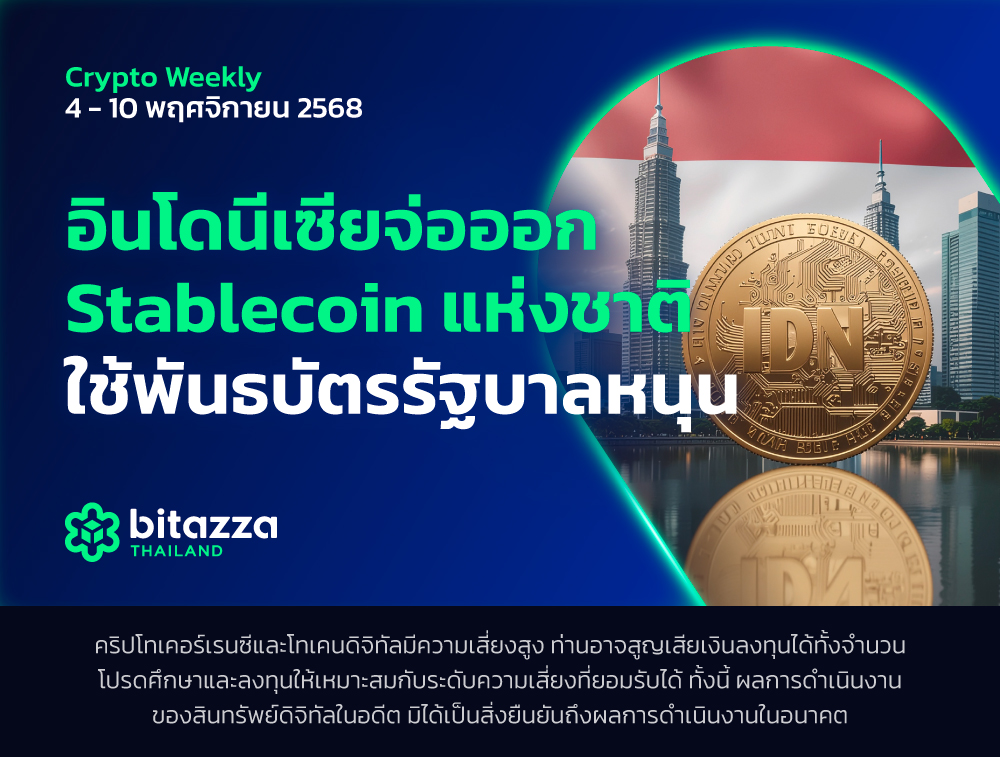
อินโดนีเซียจ่อออก Stablecoin แห่งชาติ ใช้พันธบัตรรัฐบาลหนุน
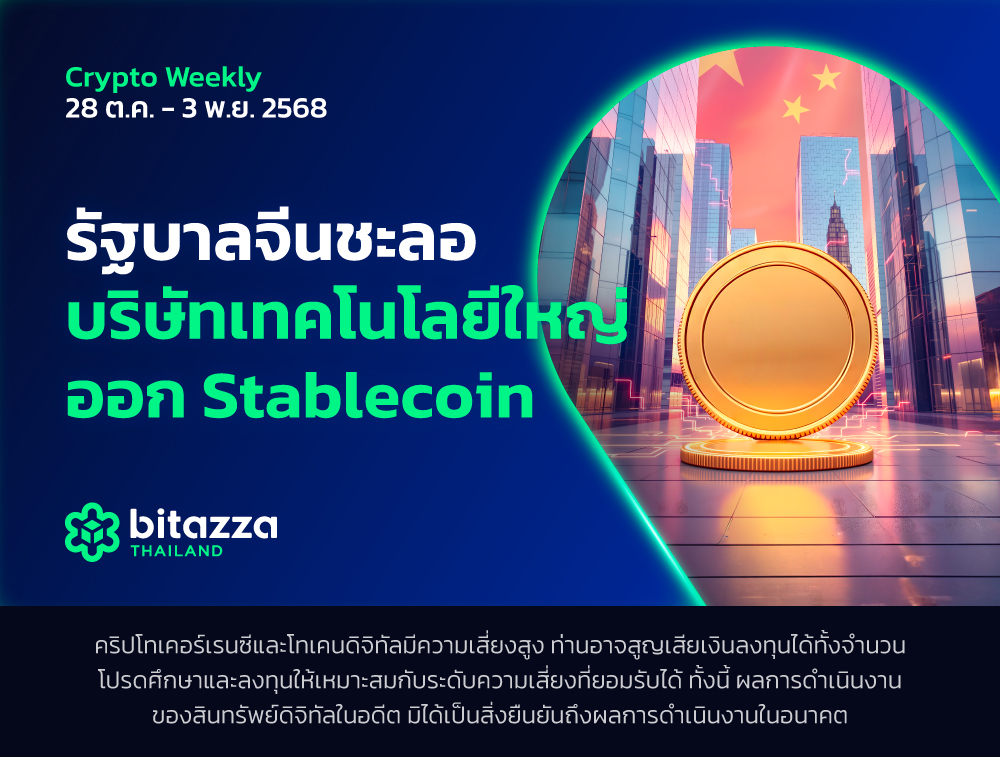
รัฐบาลจีนชะลอบริษัทเทคโนโลยีใหญ่ออก Stablecoin
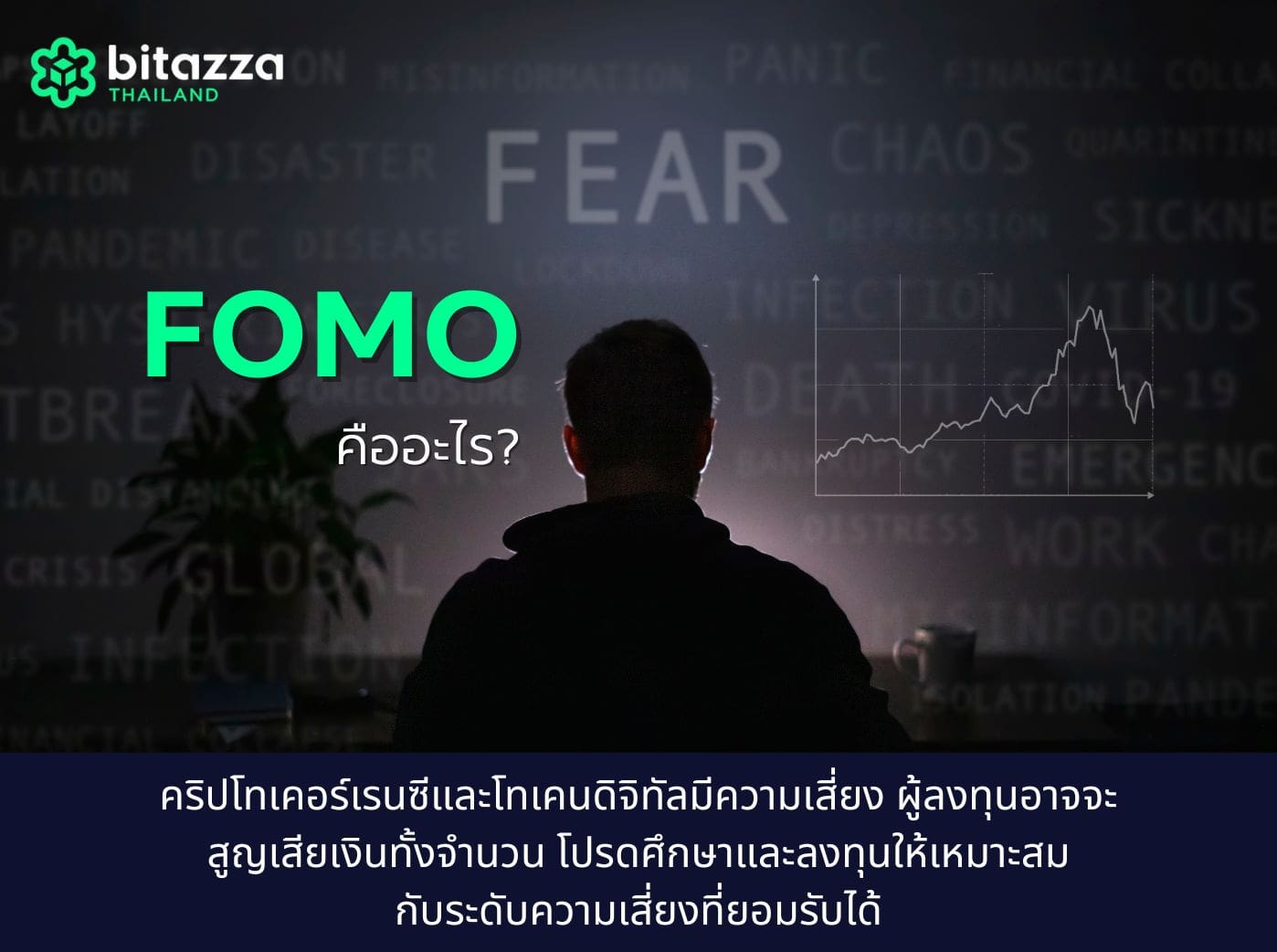
FOMO คืออะไร? ความหมาย สาเหตุ และผลกระทบต่อการลงทุนคริปโต
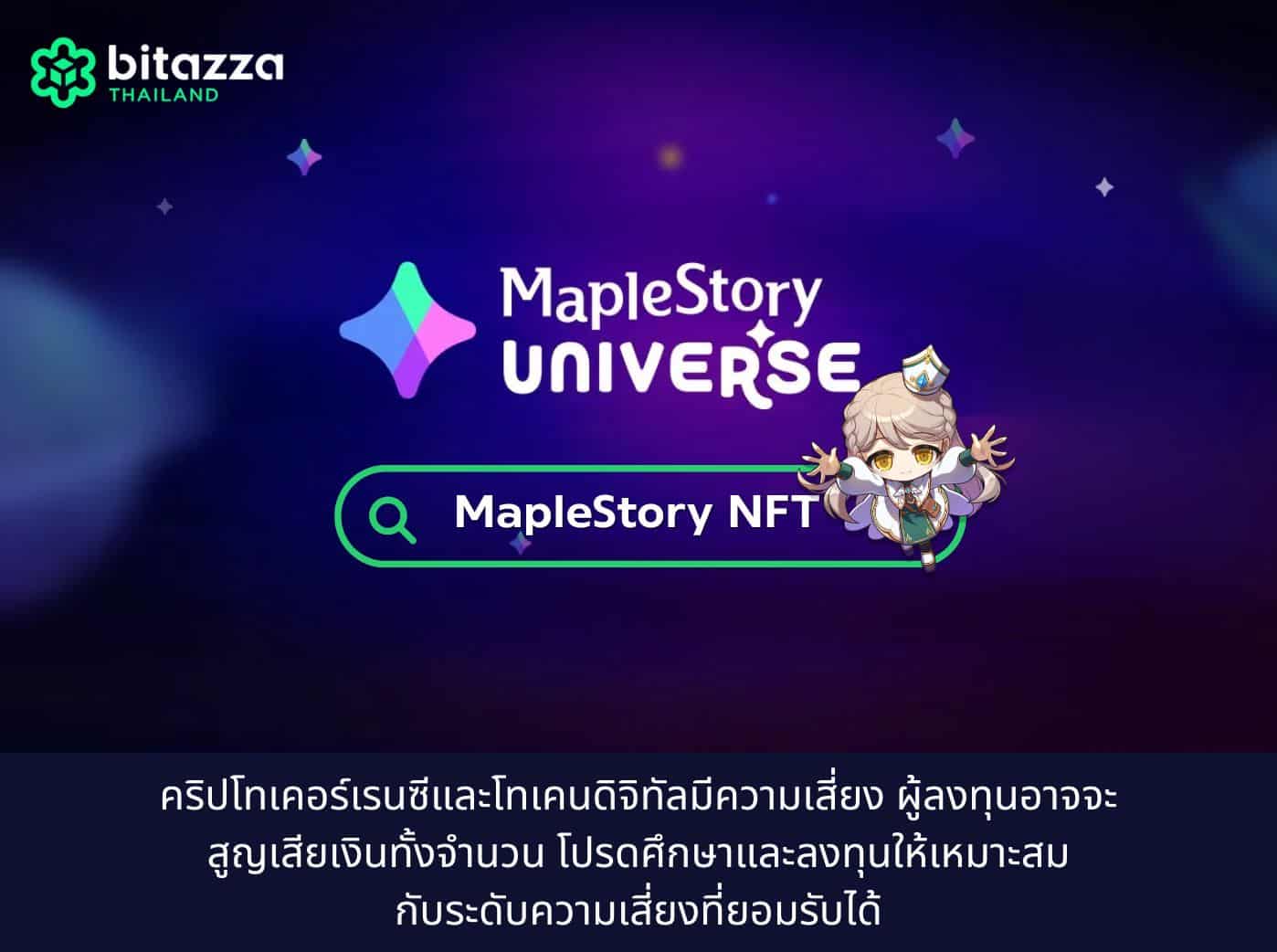
MapleStory NFT คืออะไร? เปิดโลกเกมออนไลน์สู่การลงทุนดิจิทัล

ATH คืออะไร? อธิบาย All Time High ที่นักลงทุนคริปโตควรรู้
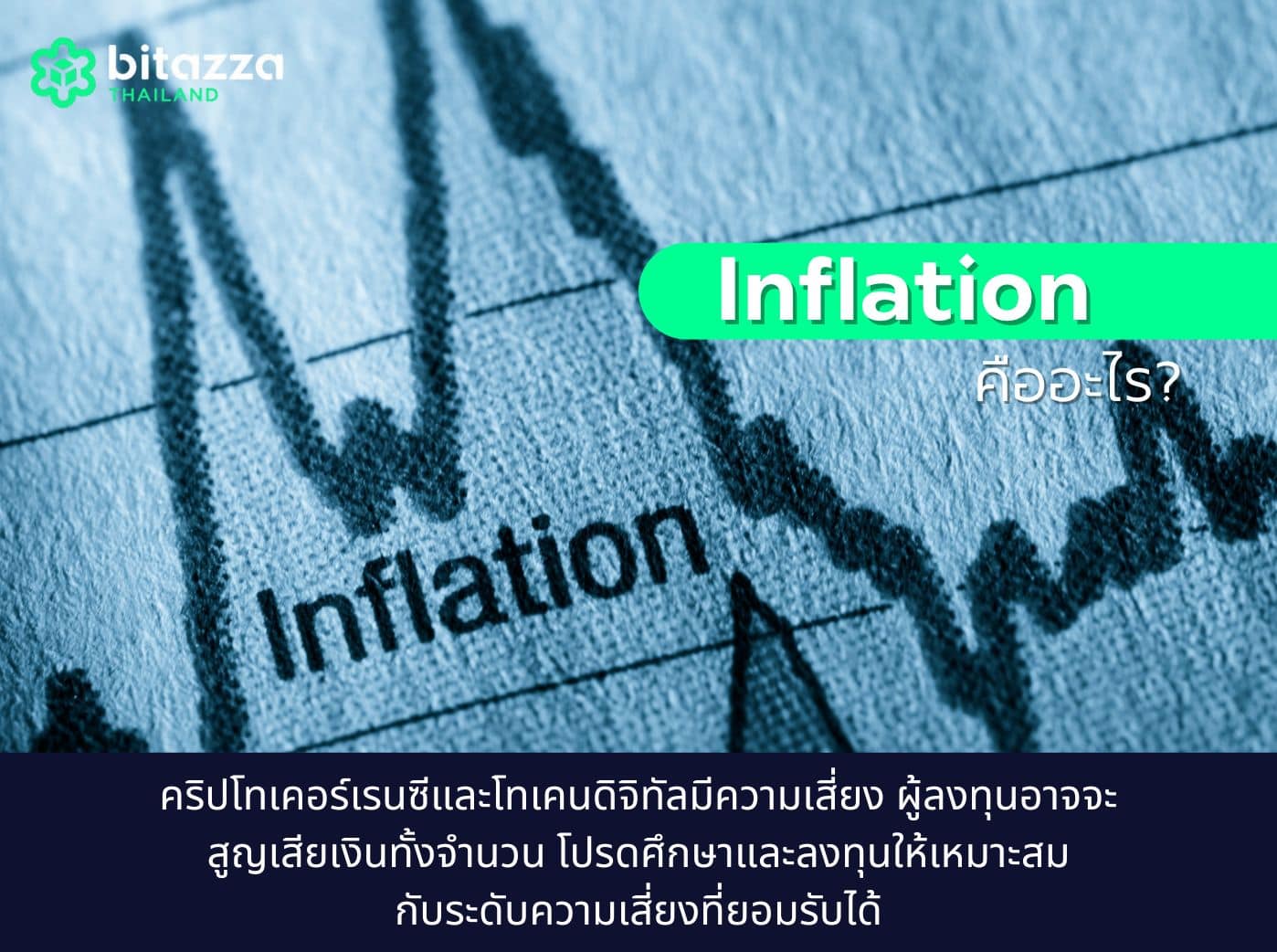
Inflation คืออะไร? ทำความเข้าใจเงินเฟ้อและผลกระทบต่อเศรษฐกิจ
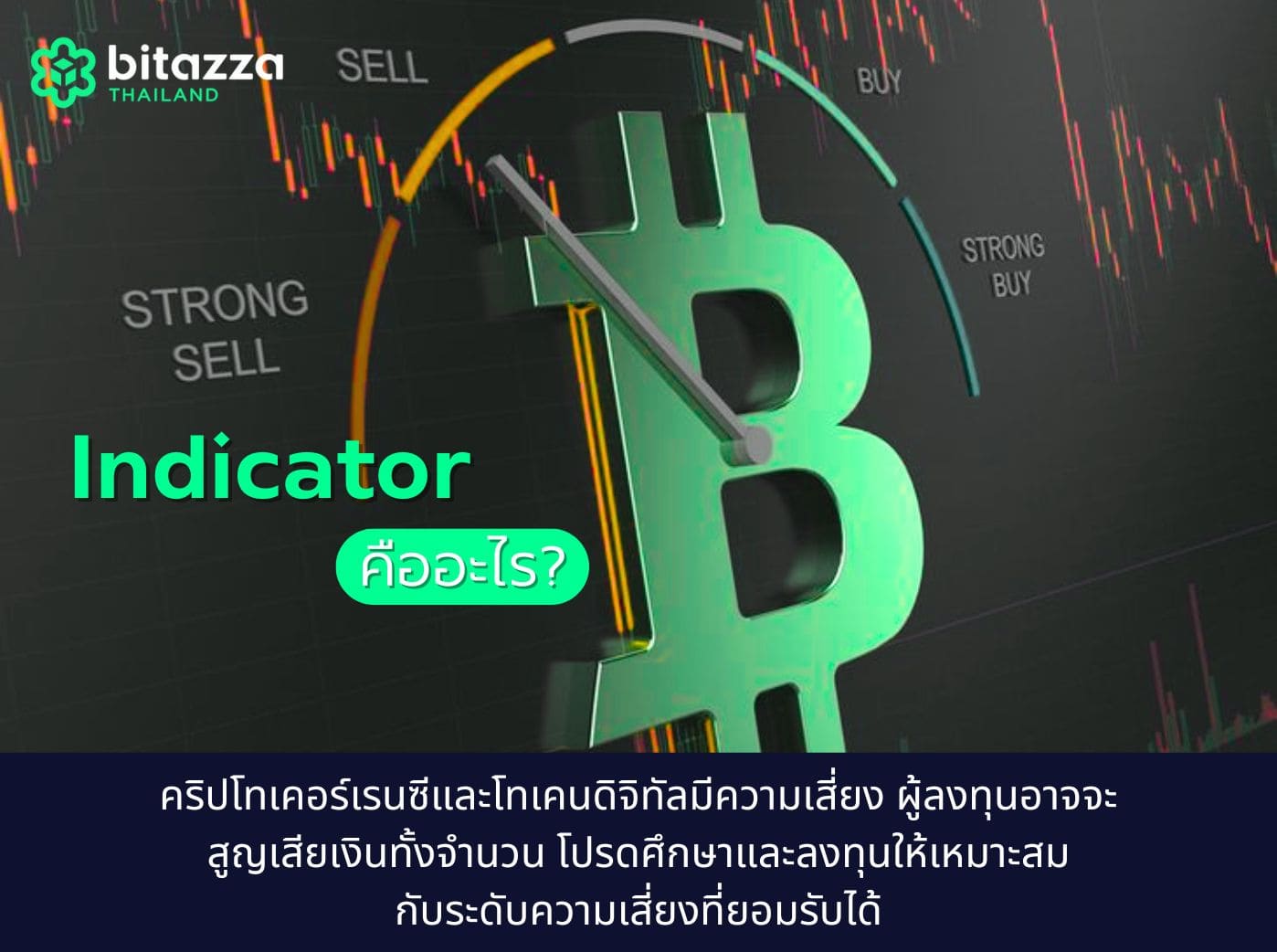
Indicator คืออะไร? แนะนำเครื่องมือวิเคราะห์กราฟที่นักลงทุนต้องรู้

